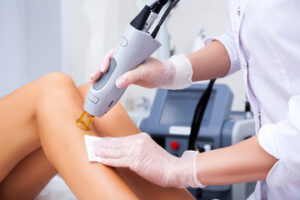The lips and eyes have been a prime area of facial beauty since time immemorial. Rejuvenating the lips with fillers, such as hyaluronic acid, is a simple procedure that can produce natural-looking results.

However, it is important to find a practitioner who has the right experience and training. Do your homework and check out their reviews and before-and-after photos. Contact Lip Injections San Diego for professional help.
The biggest consideration for most patients seeking lip filler is how natural the results will look. Achieving a natural appearance is not only dependent on the product used, but also the skill of the injector. The most advanced practitioners use a combination of techniques to achieve beautiful, balanced results that reflect the unique features of each face.
For example, advanced injection methods, such as the cannula technique, create a more even distribution of filler. This prevents lumps, bumps, and irregularities that are often associated with older injection methods. Furthermore, the cannula approach provides a more gentle approach, reducing the risk of bleeding and discomfort following treatment.
Another key factor in achieving a natural-looking result is the placement of the injections. Injections should be placed in the natural creases of your lips, rather than across the full lip surface. This allows your natural lip muscles to move freely, while creating a defined and attractive contour. Additionally, the best fillers are flexible enough to move with your natural lip motions and not inhibit them.
For instance, Restylane Kysse is a dermal filler that uses a flexible gel to plump the lip while maintaining their natural movement. This results in a soft, natural-looking pout that can last up to a year.
In addition, experienced injectors will often stagger your injections over several appointments to produce a gradual and natural-looking increase in volume. This can be particularly useful for those born with thin lips, as it gives the skin time to stretch and accommodate the new volume without looking overdone.
Finally, the most advanced injectors will take into account each patient’s unique facial structure when determining where to place the injections. This ensures that the final result is not only harmonious with your existing architecture, but also reflects the way the light hits your face and lights up your smile.
Filling in Lines and Wrinkles
Lip lines and wrinkles can make your lips look aged and tired. Injectable fillers can help smooth them out and add more shape to the lips. Typically, these dermal fillers are hyaluronic acid fillers such as Juvederm or Restylane. These types of fillers can be injected into the skin with a small needle and are immediately effective at eliminating the appearance of these fine lines. They also trigger the body’s natural production of collagen and elastin, so the skin texture will continue to improve over time.
Depending on the type of filler used, it may take more than one session to achieve the desired results. Before the procedure, a topical or local numbing cream is applied. The doctor will mark the areas to be injected, and then use very fine needles to inject the filler. Occasionally, a little ice is held on the lips before the injections to further reduce discomfort. After the injections, ice is also held on the lips to control swelling.
In addition to using dermal fillers, a cosmetic doctor can also rejuvenate the skin with advanced treatments like microneedling and prescription-strength retinoids. These treatments can tighten skin and stimulate collagen production, which can help fill in fine lines around the lips.
Another option for reducing fine lines around the mouth is a non-invasive laser treatment called Ultherapy. It uses ultrasound energy to stimulate collagen, which can lift and tighten the skin around the mouth, improving the appearance of lines and wrinkles. It’s important to see a skilled cosmetic professional for these treatments to prevent hyperpigmentation and other unwanted side effects.
A cosmetic doctor can also use fat transfer to enhance the lips. This is a technique that involves extracting fat from the patient’s own body, usually from the buttocks or thighs. The doctor then carefully injects the fat into the lips, aiming to maintain the natural lip shape including the cupid bow and any unique dips and curves while creating a uniformly augmented appearance.
Refreshing the Whole Face
Lip fillers are a great way to refresh the entire face without going overboard. An experienced injector can add just enough volume to make a significant difference while still looking natural and enhancing your features.
A fuller, more defined lip can boost self-esteem and create a more youthful appearance. This can be especially beneficial for individuals who are born with naturally thin or asymmetrical lips that detract from their facial aesthetics. Lip injections can also improve facial balance and symmetry, making the nose and eyes appear larger by adding depth to the lower third of the face.
Injectors can use lip fillers to enhance a specific area of the lips, such as reducing the size of the philtrum (the space between the upper and lower lips). Additionally, a reputable injector will understand that using too much filler can lead to an unnatural or overdone look. For this reason, they will take a conservative approach when injecting the lips and provide patients with one syringe at a time to avoid an overblown appearance.
The best dermal fillers for lip enhancement have hyaluronic acid, which is a naturally occurring substance that prevents the formation of bruising during and after treatment. However, it is important to note that lip fillers are not permanent as they will eventually be reabsorbed by the body over time. In order to maintain your results, you will need to have the fillers replaced every 6 months.
To help reduce swelling and bruising after lip injections, you can apply ice packs, drink plenty of water, and use creams that contain vitamin K, arnica, or bromelain. Additionally, you can avoid strenuous activity or contact with the lips during this time.
Lip injections are a safe, minimally-invasive procedure with a high rate of satisfaction and can produce long-lasting effects that are both natural-looking and affordable. For the best results, it is imperative that you find an experienced practitioner to perform your treatment. During the consultation process, they will review your medical history and discuss your goals to determine whether this treatment is right for you.
Affordability
Lip fillers can be a very affordable solution when compared to other cosmetic procedures. This is especially true when you consider that regular touch-up sessions will help your results last for years to come. Additionally, many reputable injectors offer specials and vouchers on their services that can further lower the cost.
When it comes to lip injections, the best way to ensure that you are getting quality work is to visit a licensed and experienced professional. It is important to remember that lip fillers are a medical treatment and should only be performed by a trained healthcare provider, like a dermatologist or plastic surgeon. If you visit a spa or beauty salon, you run the risk of having your lips permanently stretched or damaged by untrained practitioners.
It is also important to note that most plastic surgeons and dermatologists will only perform lip filler injections under their supervision. You will often find that your procedure is performed by a nurse, nurse practitioner or physician assistant because the doctors are busy with patients and surgeries.
An experienced injector will know how much product to use to achieve your desired look and will also be able to determine whether your skin can accommodate any more volume. This is a skill that only comes with experience and one that can save you from complications such as overdoing it and sagging or drooping in the future.
Additionally, a good injector will prep your lips before the procedure with numbing cream to minimize discomfort and can also provide ice for afterward if necessary. They will also give you tips on what to avoid leading up to your appointment, such as certain medications and supplements that can increase the likelihood of bruising or swelling following treatment.
It is also important to note that lip fillers can last for up to two years, depending on the type of filler used and how long your practitioner has been performing this procedure. It is also a good idea to visit your practitioner regularly for touch-ups, which are usually performed after six months.
